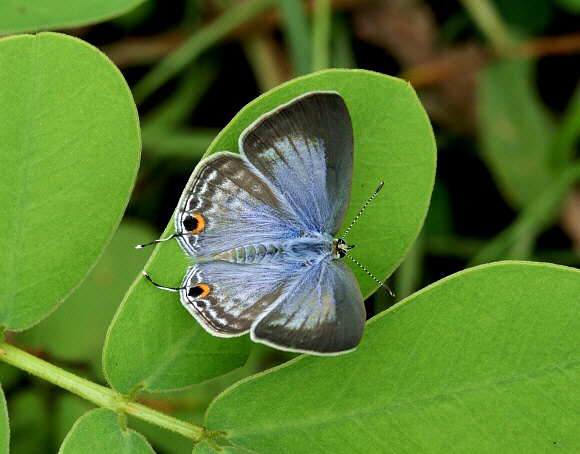
Introduction
There are 7 species in the genus Catochrysops, variously distributed from India and Sri Lanka to Malaysia, and south across the Pacific islands to Australia, New Caledonia and the Society Islands. The genus is closely allied to Chilades and Euchrysops but unlike them Catochrysops does not include any African species.
The male of strabo is shining violet-blue on the upperside, while the female is pale earthy brown, with a flush of faint silvery-blue. Both sexes have a small black spot on the upperside hindwing next to the tail, and in the female this is marked inwardly with an orange crescent.
Catochrysops strabo is found from Sri Lanka and India to Malaysia, Sumatra, Borneo, Sulawesi and New Guinea, but unlike the very similar C. panormus it does not reach Australia.

Habitats
This butterfly is found in Acacia scrub, savannah, forest edges and clearings, gardens, roadsides and almost anywhere else where the caterpillar’s foodplants occur. It is a lowland species, normally found at elevations between sea level and about 800m.
Lifecycle
The larvae feed on Leguminosae including Phaseolus, Cajanus, Dolichos and Ougeinia. They have also been reported as found on Schleichera trijuga ( Sapindaceae ) and Desmodium ( Fabaceae ). In common with most if not all Lycaenid larvae they are attended by ants, although the species has not been identified.

Adult behaviour
This very active little butterfly can be seen often in large numbers, flying around shrubs and bushes growing in forest edge or savannah / woodland habitats. It often visits flowers, including Lantana, and can be seen at rest on low foliage in sunlit areas.
When settled the wings are usually held erect, and the hindwings periodically oscillated, causing the short tails to wiggle. In conjunction with the black & orange spot in the anal angle, this creates the illusion of a false eye and a pair of false antennae. Furthermore, immediately after settling the butterfly will often rotate to face the opposite direction, which reinforces the back-to-front illusion. The result is that when a bird attacks it expects the butterfly to fly left, but instead it makes its escape to the right ( or vice versa ), leaving the bemused bird without a meal.

